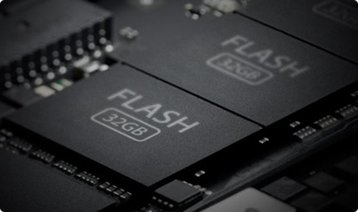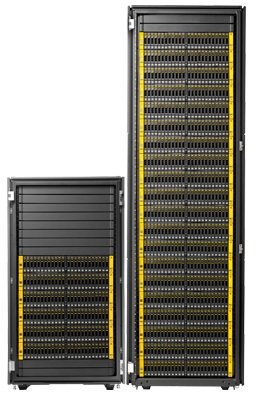HP heralded the arrival of all-flash data center on Tuesday morning, at a breakfast briefing in London dedicated to storage technologies.
The company has launched a whitepaper in which it extols the benefits of flash and claims solid state drives (SSDs) have reached sufficient capacities at a low enough price to be considered as a primary storage medium.
HP has a vested interest in the market – its popular 3Par storage arrays can use HDDs, SSDs or any mix of the two. They support the new 4TB drives made by SanDisk, helping squeeze more data in less space, and the company is already looking at 8TB SSDs, expected to launch before the end of 2015.
HP also invited a customer: British managed services provider Claranet, which has switched all standard storage to flash across three of its data centers.
Wind of change
Chris Johnson, VP and GM of HP Storage for EMEA, said data is increasingly seen as a financial burden on businesses, who are finding themselves paying for ever-growing amounts of storage infrastructure. At the same time, the dominance of traditional storage vendors is being eroded by a new generation of start-ups.
As a result of these factors, demand for storage is up, but the revenues of storage vendors are down. From HP’s point of view, there is a silver lining to all this disruption – Johnson believes that during the next cycle of hardware refreshes, customers will begin to replace their hard drive-based arrays with flash memory.
“There is now a compelling moment when customers can transition from expensive legacy storage environments to all-flash data center arrays delivering performance, scale and massive cost reduction,” he said.
The all-flash data center does away with the need for complex storage tiering. It also makes more efficient use of the storage medium since thin provisioning, compression and deduplication can be carried out as standard, without having an impact on performance.
Encryption of data at rest (as opposed to data in use) is yet another operation that can ruin the performance of hard drives, but presents no issue for all-flash arrays.
HP’s bet in this space is 3Par – a company it acquired in 2010 for a measly $2 billion. All of the 3Par hardware can be transformed from an HDD or hybrid array to an all-flash array by simply replacing the drives.
Neil Thomas, product director at Claranet, said end-user experience was often defined by the type of storage behind the service. That’s why the company started using flash for standard, as well as premium storage tiers.
“Will we get rid of disk and tape? Not in the foreseeable future, because they serve their purpose for archiving,” he explained.
“The big change for me is: we’ve been running flash arrays for a long time, but they were [reserved] just for the high-end specialist services, virtual desktops or certain databases. That was about 15 percent of what we did – they have now become the 85 percent of what we do. “
Tony Locke, analyst at Freeform Dynamics, backed the idea that businesses were reluctant to spend money on storage: he said five or ten years ago, storage was purchased as part of servers, whereas today, the demand for additional storage is growing much faster than demand for compute.
He also noted that the concerns about the longevity of flash, especially prevalent in the early days of NAND production, were still preventing some buyers from experimenting with new type of storage medium, even though modern SSDs can match their disk counterparts in terms of hours served.
But the rise of the all-flash data center also presents new challenges to overcome – Johnson suggested that, as businesses store more data, they will need to classify it better to separate information that can be deleted from information that can be sent to archive or kept on Tier I arrays.
Meanwhile Locke warned that proliferation of flash and encryption at rest would require better tools for key management- especially for data that needs to be stored for regulatory purposes, sometimes for 10 or 20 years.
One thing was notably absent from HP’s presentation: the promise of “flash at the price of disk” that was thrown around by vendors including Pure Storage and Dell, to name a few. This is where HP’s approach is new: it claims to offer flash that is cheaper than disk.


